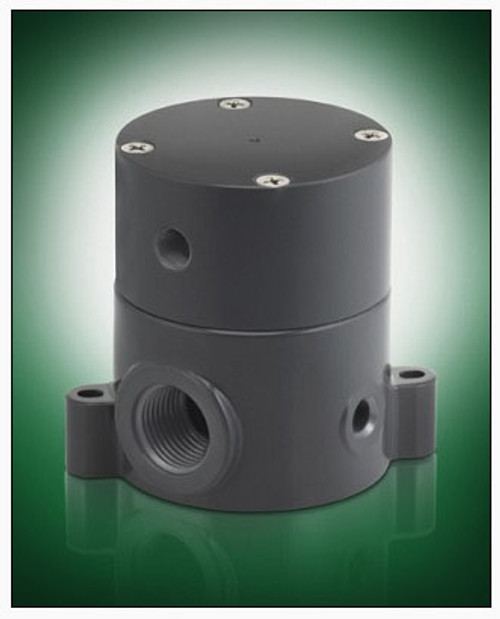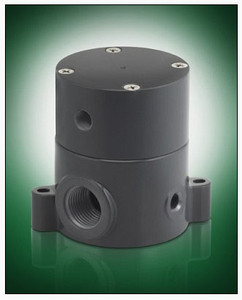Compact air operated diaphragm valves for corrosive and ultra-pure liquids.
For an instructional video on these valves please click HERE.
Features
- Compact size with PTFE diaphragm construction.
- No metal in contact with liquid.
- Various end connections available.
- Million cycle non-sticking design.
- Various body materials available: Geon® PVC, Corzan® CPVC, PTFE, Kynar® PVDF, Natural unpigmented Polypropylene.
- Normally closed design ("fail-safe" spring to close; air to open).
- Patented Fail-Dry® vented design.
- Inlet pressures to 100 PSI
Applications
Designed for pressure and drain applications processing ultra pure water and highly corrosive chemicals. The valve is ideal for a wide range of uses, from pharmaceutical to semiconductor in PTFE, Kynar PVDF or Polypro body materials; car washes to chemical plants in the lower-cost Geon PVC body materials, and higher temperatures in those applications with Corzan CPVC bodies.For high purity applications such as deionized water, Series BSDA/BSDAM provides the ultimate in non-leaching, contamination-free sealing. The standard valves are air pressure to open, with "fail safe" spring return to close. Because the diaphragm is attached to the piston, no inlet pressure is required to assist with opening. The BSDA/BSDAM is not designed for vacuum service.
Operation
A 3-way air solenoid valve connected to the 1/8" NPT port on the air cylinder head is required to actuate the diaphragm valve. When air pressure (40 to 100 psi) is applied, the diaphragm valve opens. Consult the table below for complete air specifications. When the air pressure is vented away through the 3-way air solenoid valve, the internal spring automatically closes the diaphragm. (This is referred to as "normally-closed, air-to-open/spring return valve). The spring is not in contact with liquid. It is recommended that filtered, lubricated compressed air be used.The cylinder head features multiple seals, in addition to the main diaphragm seal in contact with the liquid. There is a vent located between two seals (above the main diaphragm, below the cylinder head u-cups) that will "weep" in the event of a primary seal failure. The valve will still function, under pressure, without metal contacting liquid. This is the patented Plast-O-Matic Fail-Dry®, which adds an additional layer of "protection" for your process.








